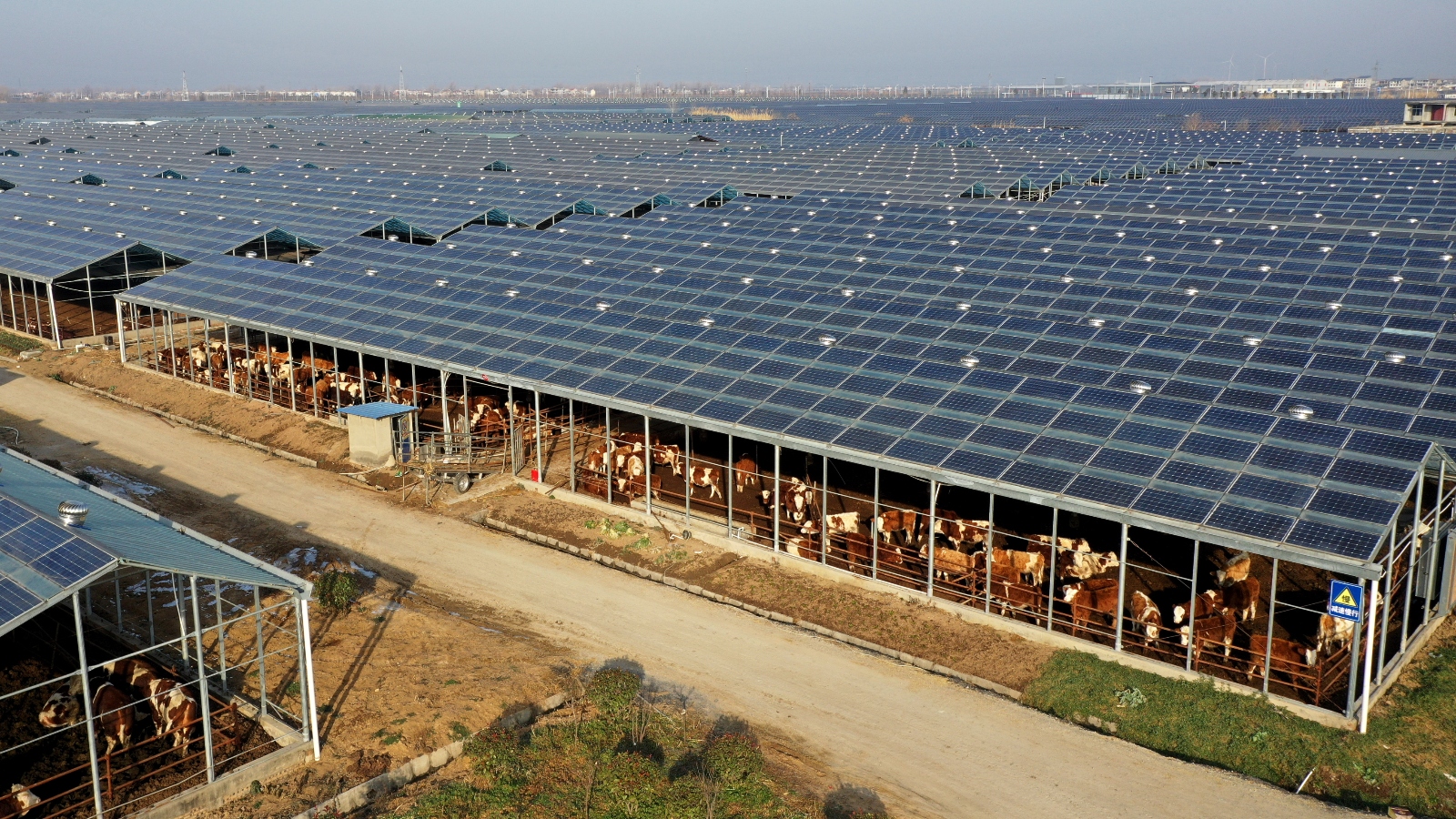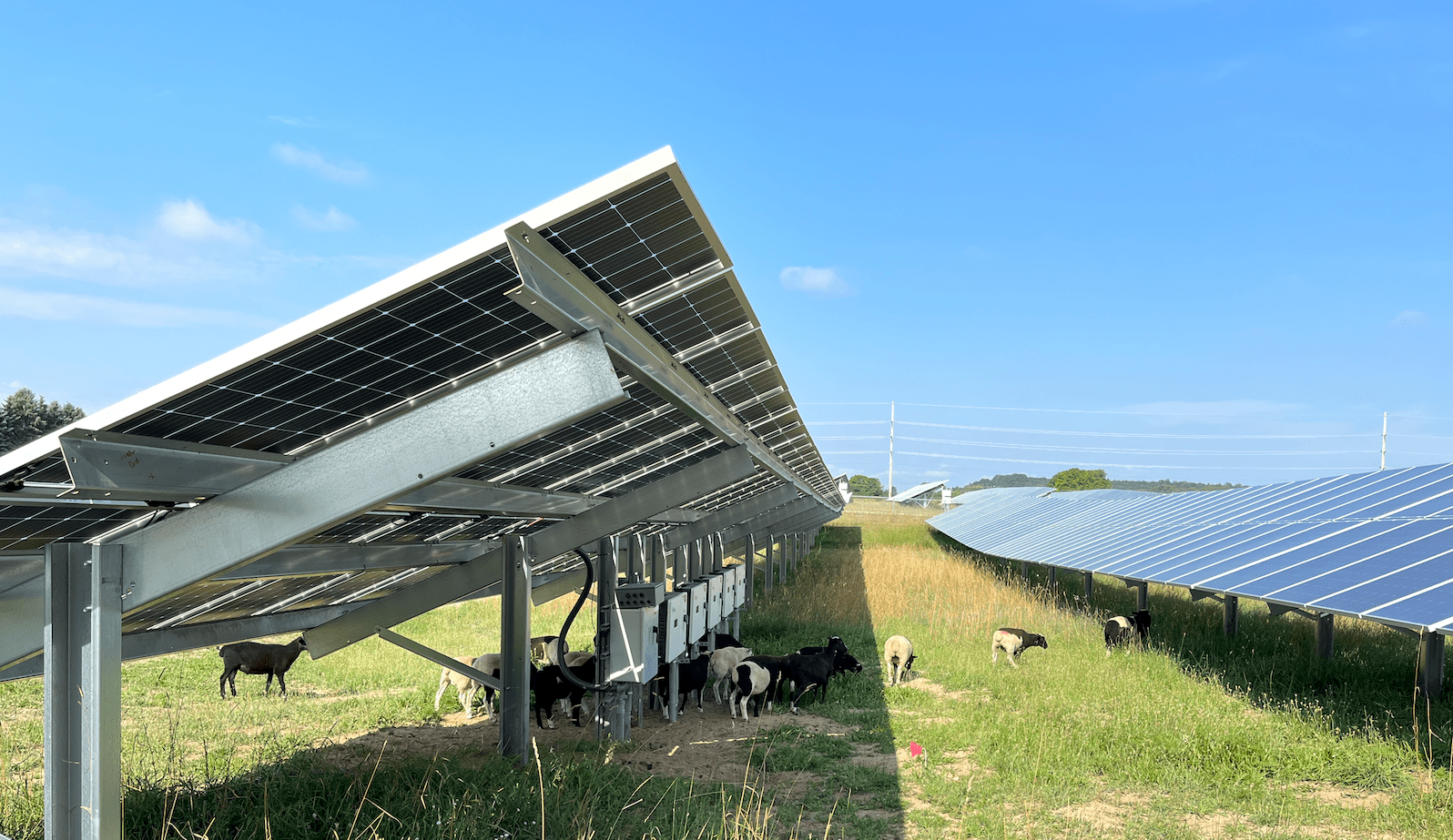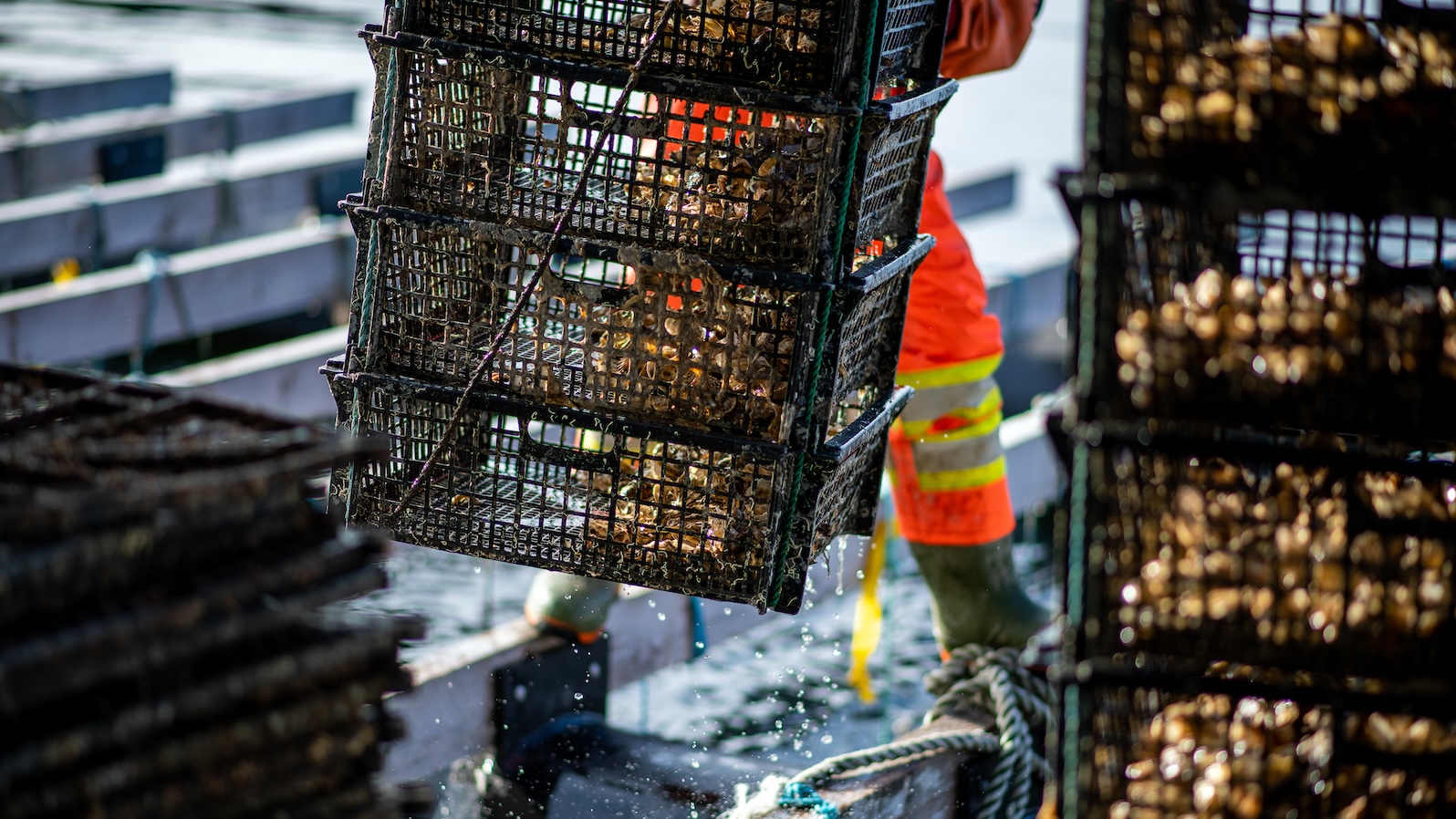As a flock of about 2,000 sheep graze between rows of solar panels, grazier Tony Inder wonders what all the fuss is about. “I’m not going to suggest it’s everyone’s cup of tea,” he says. “But as far as sheep grazing goes, solar is really good.”
Inder is talking about concerns over the encroachment of prime agricultural land by ever-expanding solar and windfarms, a well-trodden talking point for the loudest opponents to Australia’s energy transition.
But on Inder’s New South Wales property, a solar farm has increased wool production. It is a symbiotic relationship that the director of the National Renewables in Agriculture Conference, Karin Stark, wants to see replicated across as many solar farms as possible as Australia’s energy grid transitions away from fossil fuels.
“It’s all about farm diversification,” Stark says. “At the moment a lot of us farmers are reliant on when it’s going to rain, having solar and wind provides this secondary income.”
By keeping the grass trimmed, which can otherwise pose a fire risk during dry summer months, sheep save the developer the cost of slashing it themselves.
In exchange, the panels provide shelter for the sheep, encourage healthier pasture growth under the shade of the panels and create “drip lines” from condensation rolling off the face of the panels.
“We had strips of green grass right through the drought,” Dubbo sheep grazier Tom Warren says. Warren has seen a 15 percent rise in wool production due to a solar farm installed on his property more than seven years ago.
Despite these success stories, a 2023 Agrivoltaic Resource Centre report authored by Stark found that solar grazing is under utilised in Australia because developers, despite saying they intend to host livestock, make few planning adjustments to ensure that happens.
“The result is that many solar farms are poorly suited for sheep,” Stark says. “Developers need to be talking to landholders earlier than they currently are.”
Prof Bernadette McCabe, the director of the Centre for Agricultural Engineering at the University of Southern Queensland, says farming and solar are “two very different activities” and there’s “minimal research and demonstrated success” of running them in combination.
The expectation to retain farming land for primary production is driving greater interest in the coexistence of agriculture and renewable energy but McCabe says “misaligned incentives” between the developers and farmers must be better managed.
It’s these conflicting goals that are giving anti-renewable voices “fodder to attack the renewable energy industry,” according to former New South Wales solar developer Ben Wynn.
He says energy developers often “talk up the possibility” of coexisting with livestock production but don’t have “genuine desire to do so”.
Wynn is now part of a community group opposing a large solar farm proposed south of Tamworth because it lies on productive cropping country.
“We need this transition to speed up, but if we take up highly arable black soils we are giving oxygen to the naysayers,” he says.
Wynn also led the construction of a prototype solar farm outside Tamworth, raised high off the ground with steel posts to stay out of reach of a cattle herd below.
“Cattle are massive, they will rub and scratch themselves up against anything,” Wynn says.
The project was a success but Wynn says it is too expensive to be feasible on a large scale because the installation costs are three-to-four fold the cost of regular low-lying solar panels.
The integration of sheep and solar is “highly feasible,” McCabe says, because they can graze under ordinary height panels. But she says it is “still early days” to know if it will become economically viable for cattle.
Dr Nicholas Aberle, the energy generation and storage policy director at the Clean Energy Council, says solar developers should explore dual land use options but warns it be may not be suitable for every project. He adds that “the abundance of land in Australia means it isn’t always necessary.”
According to an analysis by the Clean Energy Council, less than 0.027 percent of land used for agriculture production would be needed to power the east coast states with solar projects – far less than the one-third of all prime agricultural land that the rightwing think tank the Institute of Public Affairs has claimed will be “taken over” by renewables. That argument, which has been heavily refuted by experts, has been taken up by the National party, whose leader, David Littleproud, said regional Australia had reached saturation point with renewable energy developments.
Queensland grazier and the chair of the Future Farmers Network, Caitlin McConnel, has sold electricity to the grid from a dozen custom-built solar arrays on her farm’s cattle pastures for more than a decade.
“Trial and error” and years of modifications have made them structurally sound around cattle and financially viable in the long-term, she says.
“As far as I know, we are the only farm to do solar with cattle,” McConnel says. “It’s good land, so why would we just lock it up just for solar panels?”
This story was originally published by Grist with the headline Farmers who graze sheep under solar panels say it improves productivity. So why don’t we do it more? on Jun 15, 2024.




